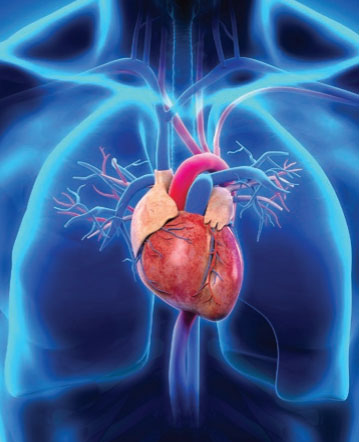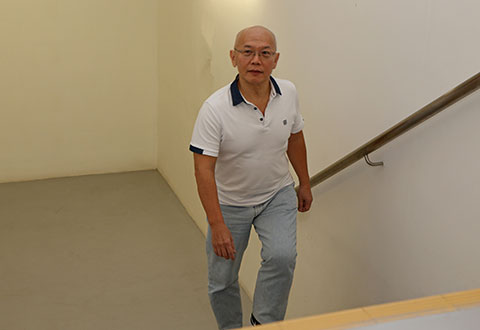Patients with Chronic Thromboembolic Pulmonary Hypertension (CTEPH), a disease of the blood vessels of the lungs caused by persistent blood clots, are now able to undergo a surgery to remove the clots.
Patients with Chronic Thromboembolic Pulmonary Hypertension (CTEPH), a disease of the blood vessels of the lungs caused by persistent blood clots, are now able to undergo a surgery to remove the clots. The open-heart surgery, previously not readily available in the region, is part of the comprehensive CTEPH clinical service offered by NHCS.
Mr Ong Chee Fatt, a 57-year-old polytechnic lecturer, used to be an avid runner who can do 3km or 4km run every day without fail, until he began experiencing breathing difficulties in 2010. He started having bad coughs and shortness of breath, and realised then that he could no longer run long distance without taking regular breaks. He was subsequently diagnosed with CTEPH in 2013.
It is estimated that there are a few hundred CTEPH patients in Singapore. The condition, not widely known, has common symptoms, such as what Mr Ong had experienced, and it will progressively worsen and affect breathing, sleeping and walking. CTEPH patients who do not receive treatment will usually not survive beyond seven years, or three years for those with more serious conditions. On average, one-third of CTEPH patients would succumb to the condition if no treatment is rendered.
First Comprehensive, Multi-Disciplinary Programme
The introduction of the CTEPH clinical service in NHCS gave patients such as Mr Ong a new lease of life. The programme, which started in 2016, is the first in Singapore to offer comprehensive treatment options – pulmonary endarterectomy, balloon angioplasty and medical therapy,
for CTEPH patients. The service provides full spectrum of care including diagnostic investigations, customised treatment options and follow-up care for the patients.

Pulmonary endarterectomy, the open-heart surgery which Mr Ong underwent, is an operation carried out to remove blood clots from the pulmonary arteries in the lungs to allow blood flow. The curative but complex surgery involves a heartlung bypass machine that will take
over the function of the heart and lungs, and requires the body to be gradually chilled to 20 degrees Celsius in order to slow down metabolism. The cooling process is necessary to protect the brain and other organs from damage.
Doctors will then have 20 minutes to remove the clots once the machine has taken over the circulation and drained the blood from the body. The whole operation takes about seven to eight hours and is undertaken by specially trained doctors and support staff, working closely as a team.
Some CTEPH patients, who may be deemed unsuitable or high risk for pulmonary endarterectomy due to various factors such as advanced age, distal disease (small vessel disease) or multiple comorbidities, will be recommended the alternative treatment option from the CTEPH programme. Balloon pulmonary angioplasty is a minimally invasive procedure which may be suitable for such patients.

Climbing stairs is now no longer a tedious task for Mr Ong after his successful surgery
Unlike pulmonary endarterectomy which involves the surgical removal of the blood clots, balloon pulmonary angioplasty uses catheter to pass through the blood vessel and position a balloon device that is subsequently inflated to push the blood clots aside and restore blood flow. Patients who underwent the balloon pulmonary angioplasty option typically need to undergo the procedure a few times to completely treat their blockages. Patients who are deemed unsuitable for pulmonary endarterectomy and balloon pulmonary angioplasty will be offered medical therapy to prevent clot formation and lower their lung pressure.
Due to the non-specific nature of symptoms and lack of awareness of the condition, many cases may go undiagnosed. It is important that we raise awareness of this condition so that more can be diagnosed and treated early,” said Assoc Prof Lim Soo Teik, Deputy Medical Director and Senior Consultant, Department of Cardiology, NHCS.
This article is from Murmurs Issue 32 (Sep – Dec 2018). Click here to read the full issue.
